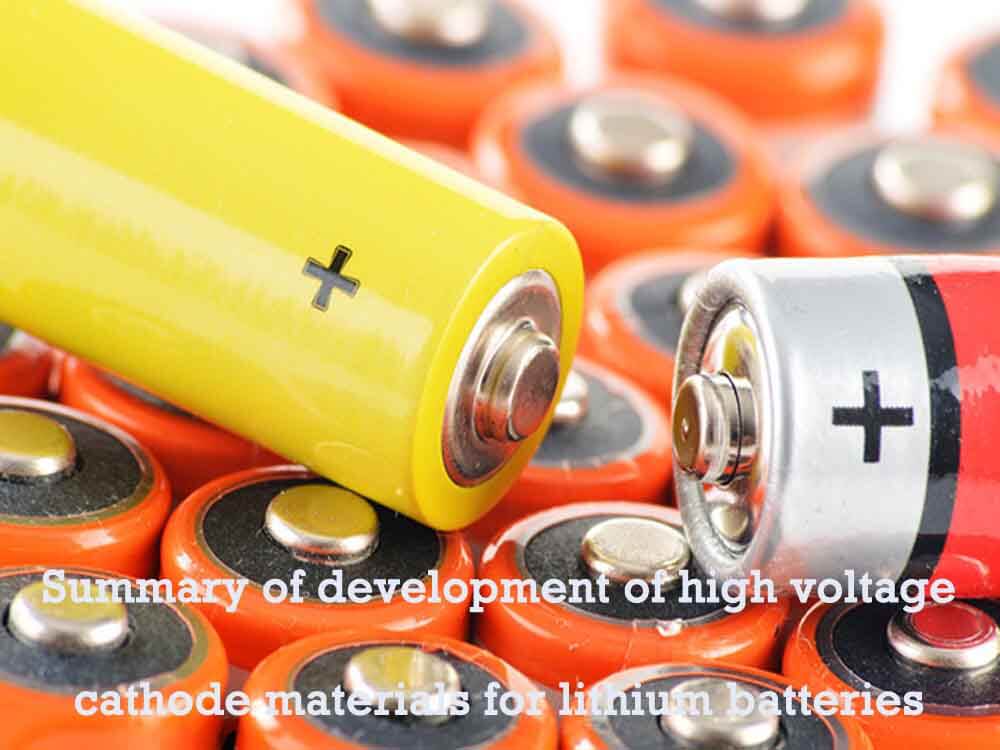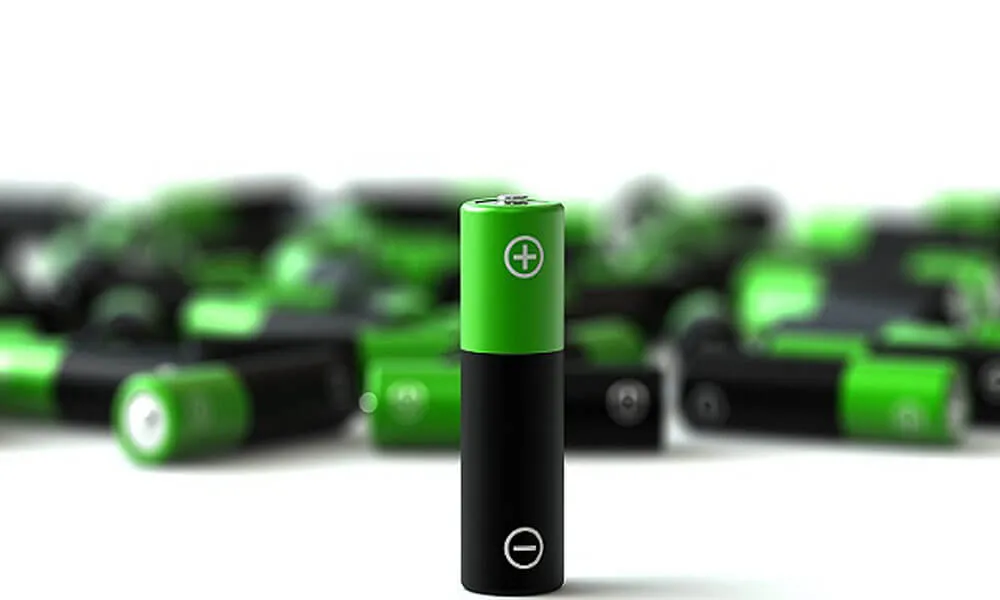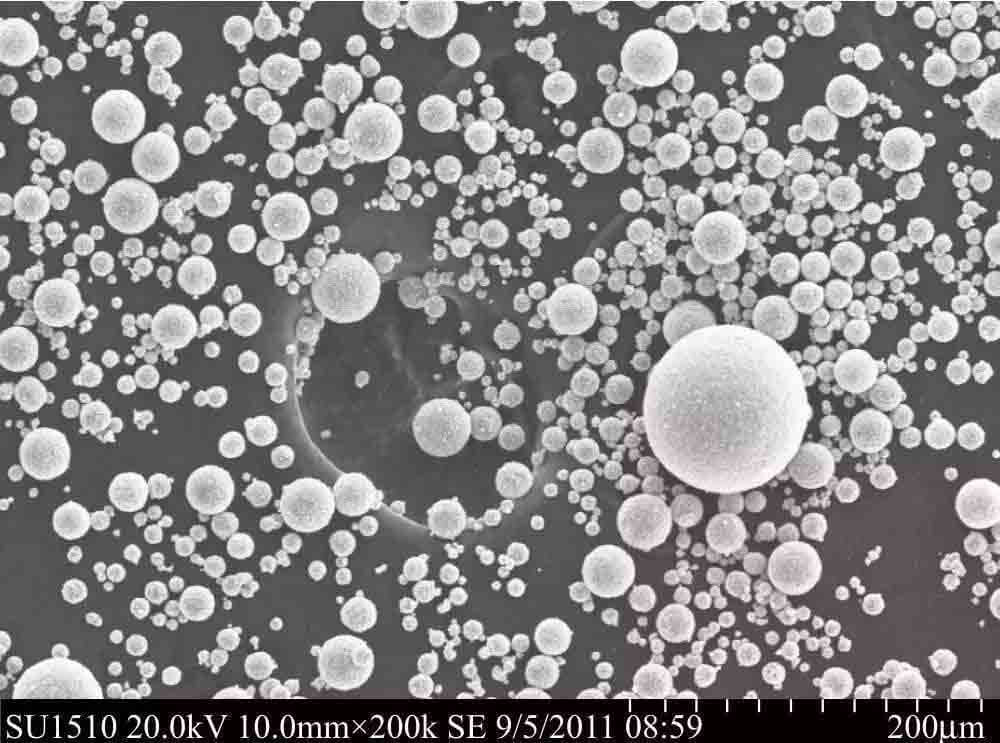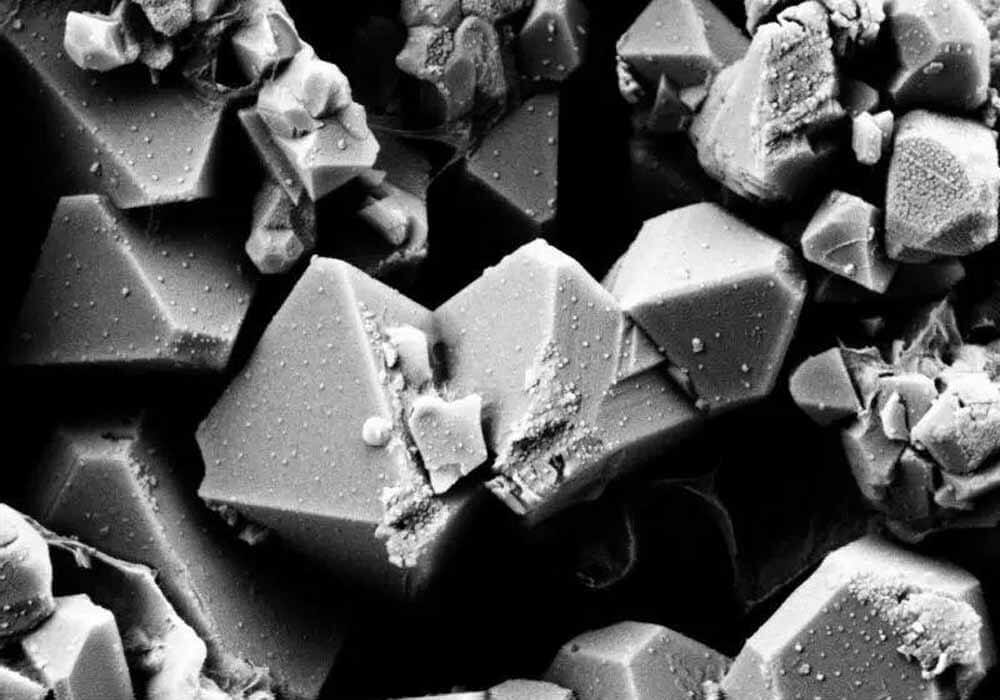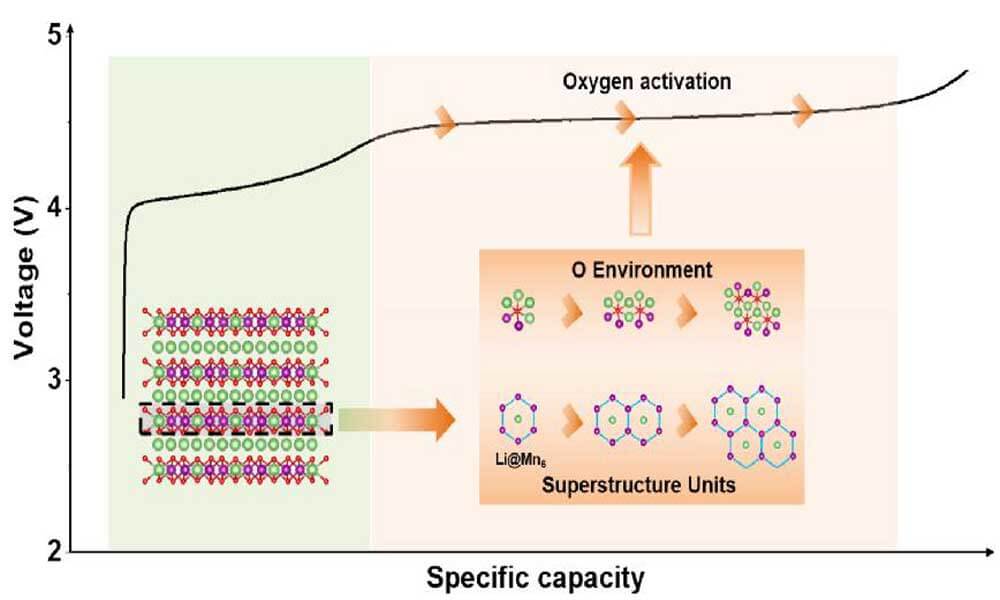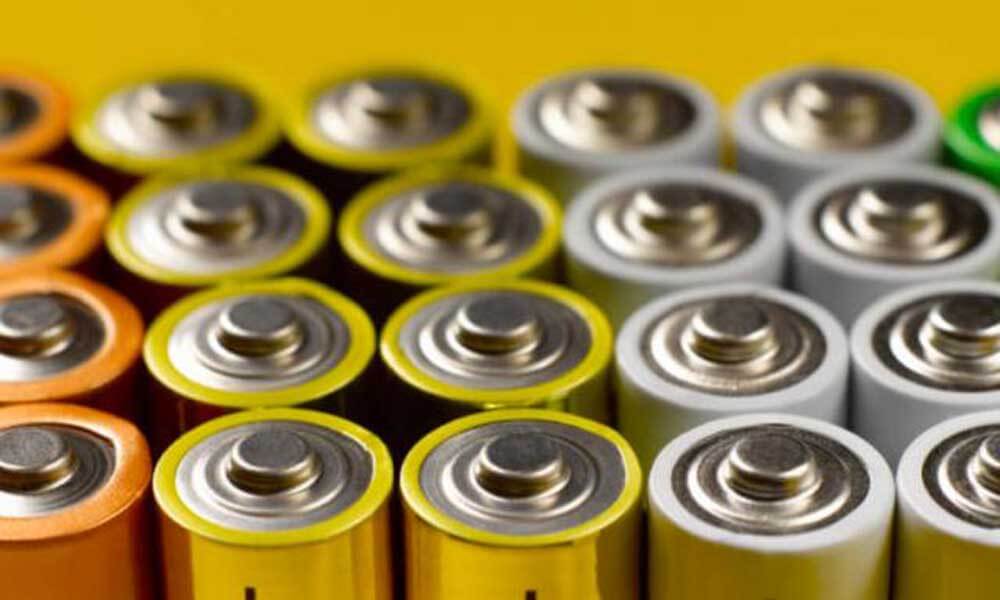Home » Battery Materials » Summary of development of high voltage cathode materials for lithium batteries
Summary of development of high voltage cathode materials for lithium batteries
The research and development of lithium battery cathode materials has always been one of the most important areas of lithium battery research. How to develop lithium battery cathode materials is also a topic of great concern to everyone.
Here I would like to give some personal views on the development trend of lithium battery cathode materials. At present, there are two basic routes for the development of lithium-ion batteries, one is large-scale power batteries, and the other is small batteries in the 3C field.
The basic point is that the current development of electric vehicles is seriously behind people’s expectations, and the 3C field will still be the main battlefield of lithium batteries in the next few years.
Therefore, I personally believe that the development trend of the 3C field in recent years has basically determined the mainstream development direction of lithium battery electrode materials. So how does the 3C field develop?
Personally, under the premise of ensuring safety and proper cyclability, improving the energy (mainly volumetric energy density) of lithium batteries is still the basic development direction of small lithium batteries in the next few years.
There are two main ways to improve the energy density, either to increase the capacity of the electrode material or to increase the working voltage of the battery. Do bigger batteries have more voltage? Not always. So it would be great if high voltage and high capacity could be combined. In fact, this is the mainstream of the current development of 3C lithium battery cathode materials.
(Note: The voltage of the positive electrode material in this article is the half-cell voltage unless otherwise specified, and the charging voltage of the full-cell battery with graphite as the negative electrode should be subtracted by 0.15V).
High voltage high compaction lithium cobalt oxide
Over the years, it has been predicted that LCO will be replaced by other materials, but the fact is that the production of LCO is still increasing steadily year by year, and it is unlikely to be out in the next ten or two years.
The recent industrialization of high-voltage (4.5V) high-pressure (4.1) LCO (high-end LCO) has developed LCO to the extreme, which is a classic example of the development of lithium battery materials.
From the capacity of conventional LCO4.2V145, to the capacity of 4.35V exceeding 155 in the first stage, and then to the capacity of 4.5V exceeding 185 in the second stage (even the capacity of 4.6V can be close to 215), LCO has basically developed to its limit.
It seems that the small increase in the charging voltage of 0.15V requires the accumulation and progress of technology behind it, but few chinese manufacturers have it. The modification of 4.35V in the first stage is relatively easy. Three or four years ago, foreign companies have already industrialized, and the principle is mainly doping modification.
The second stage of 4.5V technology is more difficult and requires bulk doping + surface coating. At present, there are several companies in the world that can provide small batches of products.
Modified elements, mainly Mg, Al, Ti, Zr, etc., have basically been disclosed. As for the mechanism of action of different elements, most people are not clear. The key to high-end LCO technology is what element to dope, how to dope, and how much to dope.
Similarly, the difficulty of surface coating is firstly what kind of coating to choose, and then what kind of coating method to use and the amount of coating.
For example, LCO surface coating oxide is a necessary modification method for 4.5V high voltage. The coating can be coated on the precursor or on the sintered product. Either wet coating or dry coating can be selected.
Wet coating can be hydroxide or alkoxide. As for the coating equipment, the choice is also very broad. This requires choosing an appropriate restraint route according to one’s own technological accumulation and economic situation. The so-called all roads lead to Rome, and the route that suits you is the best technology.
The second is that high-end LCOs are positioned as high value-added products such as smart phones and tablets. These smart gadgets are basically monopolized by Europe, the United States, Japan and South Korea. If manufacturers buy domestic LCOs without intellectual property rights,
There will be a great risk of patent disputes in the international arena, which can be seen from Apple’s practice of specifying cathode materials for several battery manufacturers.However, China’s smartphone and tablet computer industries have only just started in recent years, and they cannot afford high-end LCOs with higher prices.
However, China’s smartphone and tablet computer industries have only just started in recent years, and they cannot afford high-end LCOs with higher prices. The third factor is that the domestic high-pressure electrolyte is not enough, and the high-end LCO is particular about the high-pressure electrolyte, otherwise the safety will not be easy to pass.
Basically, it can be said that although high-end LCO has been successfully applied on Apple, it is now facing an embarrassing situation in China. Whether high-end LCO can develop in China depends on whether the domestic smartphone and tablet industry can do it. Woke up. Of course, it would be another story if FMC pursued a lawsuit.
High voltage ternary material
Theoretically, NMCs inherently have the advantage of developing towards high voltages. The standard test voltage of NMC half-cell is 4.35V, at which ordinary NMC can show good cycle performance. When the charging voltage is increased to 4.5V, the capacity of the symmetrical NMC (333 and 442) can reach 190, and the cyclability is not bad.
After charging to 4.6V, the cycle of NMC is not good, and the flatulence is also very serious. However, we believe that NMC can be charged to 4.6V through modification to meet the actual practical requirements.
The modified symmetrical NMC can reach a capacity of more than 200 in a 4.45V full battery, which is quite impressive. The method of NMC modification is basically the same as that of LCO. It is also bulk doping + surface coating, and it also has considerable technical content.
There is currently no market for high-voltage NMCs, because the market positioning of high-voltage NMCs is basically the same as that of high-end LCOs, and they are both used in the high-end 3C field. However, the application of high-end LCO in smart phones and tablets has just started, and natural high-voltage NMC has not been developed accordingly.
High-voltage NMC should be a continuation of high-end LCO. After high-voltage LCO drives the high-voltage demand of small batteries, high-voltage NMC replaces part of its market. After all, NMC still has a price advantage, which becomes more and more obvious with the rise of cobalt price.
Another limiting factor is the problem of high-pressure electrolyte. The problems of NMC gas production and high-temperature storage are more prominent, especially under high pressure. The problem of gas production needs to be dealt with by colleagues in both the electrolyte and the material itself, in order to achieve better results.
From our accumulated experience, the safety and gas production problems of high-pressure ternary can be solved with the advancement of technology, but the time may be longer.
Therefore, I personally think that the research and development of high-voltage NMC in China should be followed up, and the industrialization should be adjusted appropriately. Of course, the current development of NMC in China has entered the dead end of one-sided pursuit of high nickel ternary, which is evident from the enthusiasm of Chinese people for 811.
A lot of people have always been interested in Apple’s battery materials. As far as I know, the i-Phone5 uses a high-end LCO with an upper limit voltage of 4.3V. The i-Pad3 uses a mixed material of high-end LCO and NMC532. As for the mixing ratio of ICP, if you want to know which material is used for LCO and NMC, you can see it at a glance from the SEM photo.
Why are the materials used in the i-Phone 5 and i-Pad 3 different? The reason is very simple, the shutdown voltage setting and the insensitivity of price make high-end LCO an inevitable choice for the i-Phone 5.
The profit margin of the i-Pad is not as high as that of the i-Phone. It is possible to choose lower-cost mixed materials and use NMC to release higher capacity under the condition of reducing the shutdown voltage, which can be said to kill two birds with one stone.
In addition, after LCO and NMC are mixed, the gas production problem of NMC is significantly suppressed, the high-temperature storage life is also improved a lot, and the safety of LCO is also improved, which can be attributed to the synergistic effect. Obviously, higher voltage and energy density are the inevitable choices for the i-Phone of the next-generation i-Pad.
As mentioned earlier, due to intellectual property reasons, Apple’s high-end lithium battery LCO does not have the cake of domestic manufacturers. Maybe there is still a chance for high-voltage NMC. It depends on whether the domestic smartphone and tablet computer industry can do it.
5V nickel manganese spinel
Compared with the hot violet-rich lithium-rich manganese layered solid solution (OLO) materials at home and abroad in recent years, nickel-manganese spinel (LNMS) does not seem to attract much attention.
But what I want to say here is that LNMS is precisely the most mature one in 5V materials. Our research shows that after doping and modification of this material, even with conventional electrolytes, it has good cyclability and rate performance. Of course, the safety needs to be further improved.
The electrochemical performance decreased at a high temperature of 55 degrees, but it was still acceptable. Basically, it can be said that the modified LNMS is relatively mature in terms of the material itself. There are also two factors restricting the industrialization of HNMS. The first is still the problem of high-pressure electrolyte.
5V For conventional electrolytes, even with additives, the oxidative decomposition is still serious, and it will be more prominent at a high temperature of 55 degrees. Therefore, from the perspective of practical use, the electrolyte is still the primary problem that must be solved. The second factor is the market positioning of LNMS.
LNMS has a high voltage of 5V and a capacity of 130V. Many people take it for granted that it will be the main substitute material for LCO of 3C small batteries in the future. Is that so?
We can superimpose the discharge curves of LNMS and 4.2V, 4.35V and 4.5VLCO in a graph and then integrate them to compare the energy densities of LNMS and LCO.
Although HNMS has a high voltage of 4.7V, its energy density is only slightly higher than that of 4.35VLCO. Considering that LCO can achieve 4.1 compaction and LNMS can only reach 3.0, the volumetric energy density of LNMS is already higher than that of LNMS. 4.35VLCO is low.
Not to mention compared with 4.5VLCO! Simple analysis, it is found that LNMS has no energy density advantage compared with high-end LCO and high-voltage NMC on 3C small batteries.
In terms of price, LNMS is a lot cheaper, but the high-end 3C battery itself is not so sensitive to price. So where is HNMS positioned? I personally think that the combination of LNMS/LTO may be applied to HEV.
The energy density of this system is higher than that of LMO/LTO, and it is likely to become the next-generation alternative to LMO/LTO power batteries. The development of electric vehicles is far below people’s expectations, so I personally think that the commercialization of LHMS may take a few years after HEV has developed to a certain extent.
Li-rich manganese layered solid solution
Lithium-rich manganese layered solid solution (OLO) is now hot purple at home and abroad. The academic community also attaches great importance to OLO, and the Chinese industry has high hopes.
Many people even think that OLO may be the ultimate product of cathode materials and will dominate the arena in power batteries and small batteries. Is this really the case?
In addition to high capacity and high voltage, OLO is basically a problem. At present, it is easy for OLO0.1C to achieve a capacity of more than 250 and close to 300, and the capacity is not a problem.
Here I mainly want to talk about its other problems. Some problems can be improved through modification, while some problems are basically impossible to solve or difficult to solve at the same time.
Through surface coating modification, the first effect of OLO can be increased to 85% and close to 90%, and the first effect is not a big problem. The magnification of 3C can already reach more than 200, which is barely enough. The tap density is still low at present, basically can not exceed 2.0, it is not that it cannot be made higher, but that it will affect the magnification and capacity performance and the gain will outweigh the gain.
Of course, some people say that OLO does not contain Co and only uses a small amount of Ni, and the cost is very low. Is this true? The research of most laboratories and companies in the world shows that in order to obtain better electrochemical performance, Co is necessary and the content Not too low.
If the unique synthesis process of the precursor and the surface coating modification treatment of the material are taken into account, the overall cost of OLO does not have an absolute advantage over NMC. But OLO has several problems that are still difficult to solve at present:
1) OLO has no voltage platform, and the voltage variation range is 1.5V. I really can’t think of any kind of civilian electronic equipment that can withstand such a large operating voltage range except for special military occasions, so I have not yet figured out where this material will come in handy.
2) The cycle performance of OLO is currently relatively good. In the full battery, 100% DOD can be cycled 300 times, and it is more difficult to further improve it. OLO materials suffer from structural decay during cycling, which makes it difficult to fundamentally solve the cyclability problem.
3) The voltage hysteresis problem of OLO is relatively serious, which makes it relatively low in energy efficiency compared to other cathode materials (please note the difference between Coulombic efficiency and energy efficiency), which is especially problematic for electric vehicle and energy storage applications.
4) The safety problem of OLO is very big. The decomposition of OLO with conventional electrolyte above 4.6V is more severe, which is far more serious than that of 5V nickel-manganese spinel. OLO itself has a lower exothermic temperature on DSC than LCO.
For power batteries, safety is the first priority than any other performance requirements, so I really don’t understand why some people think that OLO will replace LFP for the next generation of power batteries.
The most basic physicochemical and electrochemical behavior of a material is determined by the composition and crystal structure of the material, which cannot be changed by specific modification measures.
Based on the above analysis, I personally think that OLO is basically unlikely to be applied to power batteries. So what about 3C small batteries? We can also superimpose the discharge curves of OLO, 4.5VLCO and 4.6VNMC in a graph and then integrate them, we can find that the energy density of OLO and high-end LCO and high-voltage NMC is not much different Not much advantage.
If the compaction density is considered comprehensively, then OLO has no advantage in volume energy density at all. Theoretical calculations show that only when the capacity of the positive electrode material exceeds 200, the high-capacity negative electrode will show an advantage in the overall energy density of the battery.
The combination of OLO and Si/C composite anode material can achieve a high energy density of 300wh/kg, which has some application value in special occasions such as military use. Due to OLO’s own technical problems and market positioning, I personally think that the possibility of OLO’s industrialization before 2020 is still very low.
A comprehensive analysis of the above four high-voltage cathode materials shows that their application is largely restricted by external factors, such as the development of high-voltage electrolytes and market positioning, in addition to the technical reasons of the materials themselves.
There are also several high-voltage cathode materials, such as lithium vanadium phosphate, lithium nickel phosphate and lithium cobalt phosphate. I personally think that they basically do not have the possibility of actual industrialization, so I will not analyze them in detail. To sum up, the application sequence of high voltage cathode materials: 4.5V LCO > 4.6V NMC > 5V LNMS > 4.7V OLO.
Postscript: The development of any thing must follow its own laws. In the field of lithium batteries, generally speaking, it takes ten or twenty years or even longer for the first discovery of a new material to be reported to its actual industrial application, which is far behind people’s expectations.
If you are interested, you can take a look at the industrialized materials such as LCO, NMC, NCA, LFP and LMO (of course they are still developing and progressing), how many years have passed since they were first reported to large-scale industrialization. It’s always filled with countless hardships and tiny improvements!
Doing business is no better than doing basic research. If you fail to gain insight into the development trend and make mistakes, it will inevitably bring catastrophic consequences to the enterprise itself. Hope this short article can be helpful to you.
Two more points to add:
1. The modification methods of high-end LCO and high-pressure NMC are not exactly the same. For high-end LCO modification, I personally think that doping is the main coating and supplementary, mainly because Mg doping plays the main role, and the coating of oxide plays an auxiliary role.
Because with the existing coating methods and LCO sintering process, it is impossible to evenly coat the oxide on the LCO surface to form a “core-shell” structure, which is clearly seen on the SEM.
Complaining to FMC with oxide coating is not sufficient. The intellectual property patent adopts the principle of presumption of guilt. The oxide is only partially coated with particles on the surface of the LCO, and the doping plays the main role.
The modification method of high pressure ternary is to pay equal attention to coating and doping. Due to the special link of co-precipitation of precursors in the production of ternary materials, the doping and coating of ternary materials is much easier than that of LCO, and the effect is also obvious.
The coating and doping of ternary materials can be completed in the precursor stage. Whether it is a wet method or a dry method, good results can be obtained as long as the process is proper.
Theoretically, the crystal structure of ternary materials, especially symmetric ternary materials, is very complete, and it seems that bulk doping is not required to improve the stability of the structure. But according to our practice, doping is still necessary, especially under high pressure conditions, it is a necessary means to improve the cyclability.
2.OLO is a material that everyone pays attention to, but not much is really done well. A pilot-level sample of a company, 0.05C/260, 1C/195, 3C/150, with a full battery cycle of nearly 300 weeks, is a sample that I personally think has better comprehensive indicators.
Wildcat has reported that the capacity of 200 can be achieved at 3C through special surface treatment, but that is obtained under the premise of sacrificing particle size TD and cyclability.
I personally think that there are still many problems with the material of OLO, and the possibility of industrialization is a big problem. In fact, as long as there is a cathode material with a platform capacity above 3.5V that exceeds 200, and the rate cycle is good, OLO is basically useless, and this material has already appeared.

